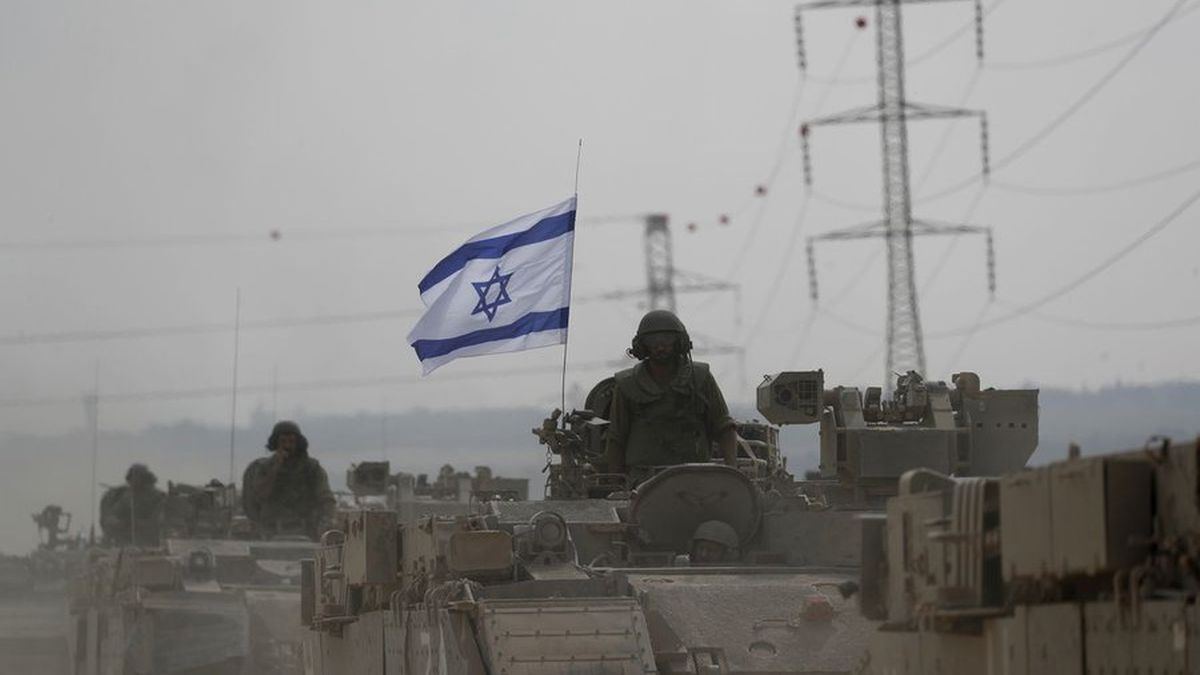Meanwhile, planned trade corridors and railways between India, Middle East and Europe They paused for the moment.
Furthermore, if the conflict spreads throughout the region, it will accelerate the global fork and October 7 can be as momentous as September 11. “It is blamed Iran for having helped plan and finance the attack. This only adds to the evidence of an emerging axis formed by Russia, Iran (and Syria, Hamas in Gazathe Houthis in Yemen, Hezbollah in Lebanon and the militias in Iraq), North Korea and China“, they indicated from Rabobank.
Now it remains to see if Saudi Arabia will maintain its recent rapprochement with Iran after the latter destroyed hopes of a peace agreement with Israel and USA.
The war in Gaza will skyrocket military spending
Military spending will skyrocket because as Russia transitions to a war economy, Europe can no longer help Ukraine without American weapons. But, “now the United States may need to dip into its dwindling weapons reserves and of his withered military-industrial production base to help Israel and this because the Pentagon wants to turn towards Asiawhere China can overcome it on all fronts,” the experts stressed.
In this way, the war will in principle have important repercussions on the “fiscal, monetary and industrial spheres“, and then it will impact the markets.
“Few of the current participants have any memory of having experienced a genuine extended war economy. The historical heuristic is that the impacts on fiscal deficits (higher), the inflation (higher), the raw material prices (higher), the asset markets (lower) and currency markets (more savage) do not resemble those we see in times of peace,” they highlighted in Rabobank.
War effect: what could be the energy impact?
Although it is still unknown the magnitude that the conflict between Israel and Hamaswars tend to escalate and powers such as Russia they can earn more”destabilizing things“that by helping to maintain order, like other actors, they can see the opportunity to act against the United States, tied militarily on two fronts.
From this point of view, the energy impact may be different depending on three war scenarios.
Firstly, if the confrontation remains between Israel and Hamasin the Strip of Loopboth actors are tiny in the energy markets and they do not produce oil. Furthermore, since Israel temporarily closed Tamarif the conflict remains contained, the energy markets will adjust quickly and despite the fact that the loss of this gas field will reduce support for Europe, but “the effect will be moderate.”
Now, if war involved Israel (USA)-Gaza-Lebanon-Syria-Jordan-Egyptthe focus would be on the Suez Canalone of the great points of world trade. 15% of global trade, 4.5% of global crude oil, 9% of refined products and 8% of LNG tankers transit through it..
“He SUMED pipeline runs parallel to Suez Canal and transports around 80% of the Petroleum Sent from Middle East to Europe. If the pipeline stops operations due to the conflict, or the Canal is blocked by a destroyed tanker or container ship, the alternative route around the Horn of Africa adds two weeks of logistical travel time, at significant cost. Any expansion of the war to the Sinai Peninsula and the Suez region risks triggering such events.“, warned the strategists.
And finally, in the event that the countries involved in the conflict were Israel (USA)-Hamas-Lebanon-Syria-Jordan-Egypt-Iran-Saudi Arabia/Gulfthe situation would be more complicated since, currently, Iran produces 3 million barrels per day of crude oil, and approximately half is exported to China.
“In addition, he has claimed dominion over the Strait of Hormuzanother important bottleneck for global energy market through which 17% of global transport flows transit. Petroleumjust like him LNG from Qatar. “We would remain above US$100 per barrel of crude oil in a scenario in which the United States imposes strict sanctions on Iranian oil and at the same time protects ‘allied’ oil tankers,” the analysts commented.
War effect: what could be the food impact?
According to previous possible war scenarios, the conflict in the Middle East would also have a food and agricultural impact.
In the first scenario, if only Israel and Hamas are involved, it must be taken into account that Israel It is a major exporter of potash and phosphorus and that could have a negative impact. In 2022, it exported 6% of the world’s potash and 8% of phosphate fertilizers.
“It remains to be seen how much of those trade volumes will be affected in the coming months. Israel is also a minor importer of cereals, meat, dairy products and vegetable oils“said the specialists in Rabobank.
In that context, the farmers around the world could feel a somewhat negative impact due to the possible increase in the costs of energy and the fertilizers.
In the second scenario, if Israel (USA)-Gaza-Lebanon-Syria-Jordan-Egypt are involved in the conflict, it must be taken into account that the broader region of Middle East and North Africa (MENA) it’s a major fertilizer exporter and a important importer of cereals and live animalsas well as a prominent importer of dairy and meat.
“If the conflict spreads to Egypt in particular, it could temporarily cause a fall in grain prices due to concerns about demand,” strategists say.
And in the third scenario, if Israel (USA)-Hamas-Lebanon-Syria-Jordan-Egypt-Iran-Saudi Arabia are involved, the problems of fertilizer exports and grain imports would become much more serious.
Currently, around 30% of world exports of nitrogen fertilizers come from MENA (top five: Qatar, Saudi Arabia, Egypt, Oman, Algeria), with more than 25% of global exports of mixed fertilizers (the main three: Morocco, Saudi Arabia, Israel) and around 10% of potassium fertilizers (the main three: Israel, Jordan, Egypt) and almost half of the exports of phosphate fertilizers (the main five: Morocco, Israel, Egypt, Lebanon and Tunisia).
“Even more important than direct exports could be the impact of rising manufacturing costs. energy in the production and global supply of nitrogen fertilizers. Their prices are very sensitive to increases in energy prices,” experts warned.
In short, a war that escalates beyond the borders of Israel and Gaza could bring a “wide range of destabilizing effects, both direct and indirect,” whereby the global economy and politics, as well as markets, could ” experience much more extreme bifurcation, polarization, and violent volatility.”
Source: Ambito




